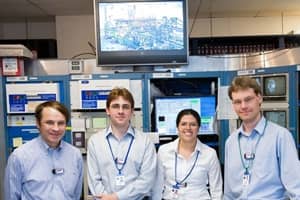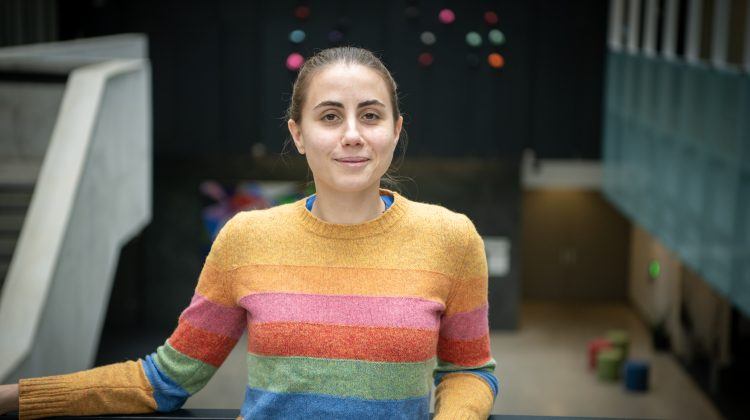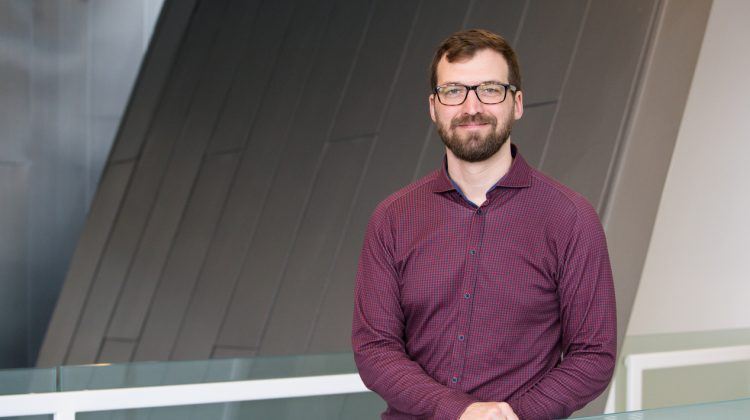Perimeter Science: Hunting for New Forces
Perimeter Faculty members Philip Schuster and Natalia Toro use existing accelerators to look for forces beyond the known four.

Electromagnetism, strong, weak, and gravity: these are the four forces. But are they the only ones? If there were other forces – forces that interacted with us only weakly, if at all – how would we know?
“There easily could be other forces in nature, and we wouldn’t have found them,” says Philip Schuster, a new Perimeter Faculty member who specializes in particle physics. “They might act on other kinds of matter, like dark matter, but they’d have a tough time coupling to us.”
Nonetheless, there are few particular ways in which these forces could be detected. Schuster and fellow Perimeter Faculty member Natalia Toro envisioned a particle physics experiment in which the carrier of such a new force – it would be something like a photon, but with mass – could be spotted in the lab. An article on their research has just been published in Physical Review Letters.
The key is that the new force carrier could mix with the photon. “Quantum mechanically, the new boson could convert to a photon – or vice versa,” Toro explains. “Then the new force could couple to electric charge, at some small fraction of the [electromagnetic] strength.” This would allow the new force to affect ordinary matter, and this effect could be detected with particle physics techniques.
“A few years ago, physicists realized that there could well be new forces at energy ranges we’ve already explored – and we would have missed them, because the processes are so rare,” says Schuster. “But we also realized that we have equipment in laboratories all over the world where one could do a one-month experiment, and be orders of magnitude more sensitive to new forces.”
Schuster and Toro worked closely with theorists James Bjorken and Rouven Essig of the Stanford Linear Accelerator (SLAC) and experimentalist Bogdan Wojtsekhowski of the Thomas Jefferson National Accelerator Facility, in Virginia, to design an experiment to run at Jefferson Lab, which has the highest intensity electron beam in the world. The experiment, dubbed APEX, involves more than 60 scientists and engineers. It has just completed a test run.
Jefferson Lab was chosen not only because of the intensity of the beam, but because the mass range it can explore is both previously unexplored and particularly interesting.
There are places where we’ve already checked for new forces, explains Toro, sketching in the air a graph that resembles a large hill with a sagging cloud cover above it. The graph shows the coupling strength of the new force carrier on one axis and carrier’s mass on the other. The open, unexplored space between the hill and the cloud is the same space that the Jefferson Lab beam – and other beams around the world – can easily reach.
This clear sky space also happens to be the space in which something interesting might well be happening. There’s an anomaly in the magnetic moment of the muon – the g-2 anomaly – that could be explained by a new force carrier in this mass range with a very weak coupling. There are astrophysical anomalies that could be explained if dark matter was affected by the new force – and there are some models based on these anomalies that predict that the force carrier was in this mass range. Finally, the coupling strength in this space is about one part per thousand – a region interesting to theorists because it’s a loop factor, a radiative correction in quantum field theory.
It’s a lucky coincidence. “I definitely remember an afternoon that was full of lots of ‘holy cow!’ moments, when we realized these things lined up,” says Schuster.
APEX’s successful test run proved the feasibility of looking for new force carriers using existing accelerators, and also explored a piece of the parameter space – taking a narrow swath out of the clear sky. “After the first hour of running, we were into new territory,” says Toro. “It’s a beautifully sensitive experiment.”
APEX is preparing for a full run.

APEX is one of several experiments hunting for the carrier of a new force, a hypothetical boson dubbed A’. This graph shows the range of the parameter space covered by these proposed experiments. The solid red is the slice of parameter space covered by APEX’s test run. The full APEX experiment will search the entire area above the red curve.
























































































